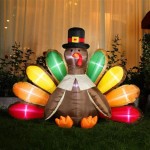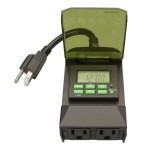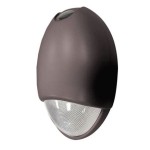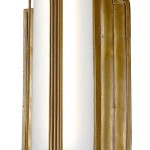What Is the Difference Between Indoor and Outdoor Extension Cords?
Extension cords are essential tools for expanding the reach of electrical outlets, providing power to devices in locations where a standard outlet isn't readily available. However, there are distinct differences between indoor and outdoor extension cords, making it crucial to choose the right type for your specific needs. Failing to do so can lead to safety hazards and damage to your devices or even injury to yourself. This article will delve into the key differences between these two types of extension cords, highlighting their construction, safety features, and intended uses.
Construction and Materials
The core difference between indoor and outdoor extension cords lies in their construction. Indoor cords are designed for use within enclosed spaces, while outdoor cords are built to withstand the elements and potential hazards associated with outdoor environments.
Indoor Extension Cords:
- Insulation: Indoor extension cords typically feature a flexible, non-weather-resistant insulation, often made from rubber or thermoplastic. This insulation offers basic protection against accidental shocks and abrasion under normal indoor conditions.
- Conductor Material: These cords usually employ copper conductors that are either solid or stranded, depending on the cord's thickness and intended load. The copper offers decent conductivity for indoor applications.
- Outer Sheath: The outer sheath of indoor cords is typically made from a material like PVC (polyvinyl chloride), which provides basic protection against wear and tear.
Outdoor Extension Cords:
- Insulation: Outdoor cords are designed for greater durability and weather resistance. The insulation is usually made from thicker, more robust materials like rubber or thermoplastic, offering enhanced protection against moisture, UV rays, and extreme temperatures.
- Conductor Material: Similar to indoor cords, outdoor cords typically use copper conductors. However, these conductors are often thicker and may be stranded for added flexibility and durability.
- Outer Sheath: Outdoor cords often feature a thick, weather-resistant outer sheath made from materials like rubber or PVC. This sheath provides protection from water, abrasion, and UV degradation.
- Ground Fault Circuit Interrupter (GFCI): Outdoor extension cords may come equipped with a built-in GFCI to protect against electrical shock. GFCIs are essential because they interrupt the electrical circuit if they detect a ground fault, which can occur due to water or other conductive elements coming into contact with the cord.
Safety Considerations
Beyond the construction, safety is a paramount concern when choosing an extension cord. Indoor and outdoor cords have different safety features designed to minimize risks in their respective environments.
Indoor Extension Cords:
- Safety Rating: Indoor cords are typically rated for use in dry locations and may not be specifically designed for use with heavy-duty appliances or in damp environments. Be sure to check the cord's amp rating (the maximum amount of current it can handle) to ensure it is compatible with the device you plan to use it with.
- Fire Hazard: Indoor extension cords, due to their less robust construction, pose a higher risk of fire if they are overloaded or misused. Always use an extension cord with the correct amp rating for the device, and avoid overloading the cord by plugging in multiple high-power devices.
Outdoor Extension Cords:
- Weather Resistance: Outdoor cords, with their weather-resistant construction, are designed to withstand exposure to rain, snow, and other harsh conditions. They are often UL-listed (Underwriters Laboratories) as being suitable for outdoor use.
- GFCI Protection: As mentioned earlier, outdoor cords may have a built-in GFCI, providing an extra layer of protection against electrical shock, particularly when used in wet or damp environments.
Intended Use
The final key differentiating factor between indoor and outdoor extension cords is their intended use. Indoor cords are designed for use within the confines of a building, while outdoor cords are built for use outside, in exposed environments.
Indoor Extension Cords:
- Typical Uses: Indoor extension cords are commonly used for powering lamps, electronics, and other household appliances within a building. They are generally suitable for use in dry areas.
- Limitations: Indoor cords are not designed for use in wet or damp environments. Using them outdoors or in areas prone to moisture can create a serious safety hazard.
Outdoor Extension Cords:
- Typical Uses: Outdoor extension cords are intended for use in outdoor settings, such as powering yard equipment, holiday decorations, and other devices that may require electrical power outside of the home.
- Advantages: Outdoor extension cords are designed to withstand the elements and are often fitted with GFCIs to enhance safety in wet conditions.
Choosing the right extension cord is crucial for ensuring proper functionality and safety. Indoor and outdoor cords offer distinct features and safety considerations, highlighting the importance of selecting the appropriate type for your specific application. Always prioritize safety and consult manufacturer specifications for the best use of any extension cord.

The Difference Between Indoor And Outdoor Extension Cords Eric M Krise Services

Differences Between Indoor Outdoor Extension Cords Brase Electrical

How To Tell If An Extension Cord Is For Outdoor Use

Best Ways To Determine An Indoor Or Outdoor Power Cord

Indoor Vs Outdoor Extension Cord What To Choose

Best Extension Cords Of 2024 Indoor Outdoor

Husky 50 Ft 12 3 Medium Duty Cold Weather Indoor Outdoor Extension Cord Blue 85050hy The Home Depot

Hdx 100 Ft 16 3 Indoor Outdoor Extension Cord Orange 277525 New Com

Indoor Outdoor Extension Cords 25 Qc Supply
Can You Use An Outdoor Extension Cord Indoors What Are The Differences Between Indoor And Cords Quora
Related Posts







